Inside “Randolph Carter's declaration”, a story that will give life to a cycle of stories dedicated to the character, unravels that network of meanings and concepts so dear to Howard Phillips Lovecraft, even if the story itself is only a few pages long.
di Lorenzo DiGiuseppe
cover: Louis Moe
It must necessarily be noted that the themes present ne The statement are developed in HPL's most famous works: for example, the role of death and its morbidity in Herbert West, resuscitator e The case of Charles Dexter Ward; or the obsession with the unknown and its unveiling In search of the mysterious Kadath e The mountains of madness. These are themes that will rage throughout the pages and throughout our career, so trying to understand them in this story, along with other more specific ones, means laying solid foundations that can be further punctuated with details later on.
So where to start to unhinge the writing of the Providence dreamer and sink your hands into the bowels of his communication? Maybe you need to start withtoo human interest in the unknown and from charm of death. Carter, dragged by his friend Harley Warren, is pushed into a cemetery to open a grave. The purpose is unknown to the protagonist, while the friend seems to expect something. Warren forbids Carter to go down as he enters the dark depths of the stairs revealed under the flat tombstone. Carter will thus remain connected to him only thanks to a long telephone cable, while the terror materializes in the darkness [cf. HP Lovecraft: "Under the Pyramids"].

In this very brief summary of the plot the power of the Lovecraftian substratum already emerges. The characters feel, as HPL himself writes, a "reluctant fascination" with death: they act in a cemetery in the middle of the night, they open a tomb, they face a darkness so dense as to be palpable and both experience death itself, some suffering it and some listening to it. The will of a confrontation with death is underscored by the fact that neither Warren nor Carter shrinks from it. The first does not escape the fatal ax of the monstrous and shapeless destiny and the second does not hang up the phone hearing the atrocious screams of his friend. Death thus arrives via cable, as a "detached" voice [cf. R. Giorgetti, HP Lovecraft, the "doors of perception" and the "cracks in the Great Wall"].
The double dimension of the unknown thus unfolds in an infinite contrast: on the one hand the wonder of discovery and the attraction of mystery; on the other, the horror that hides what is unknown, what still cannot be rationalized. All this is symbolized by the tomb, door to the Elsewhere, rich at the same time in history, humanity and terror. The fact that the story takes place in a cemetery is not just a narrative expedient or just the most suitable setting for placing a tomb, but it becomes a place full of ambiguity, an environment at the same time hostile, made of inscrutable shadows and movements, and attractive. , where a pale moon reflects its rays on the thick grass in strange flashes [cf. S. Fusco, Lovecraft, or the inconsistency of the real].
The dismay in the face of what is foreign poses a fundamental key to understanding if one knows and investigates the biography of our man, who once discovered the diversity, racial and cultural, in a Babylonian and labyrinthine New York remains terrified: an experience that will generate an unregulated movement, giving life to the series of the most important texts of his literary universe, among which the most extreme is perhaps The Horror in Red Hook.
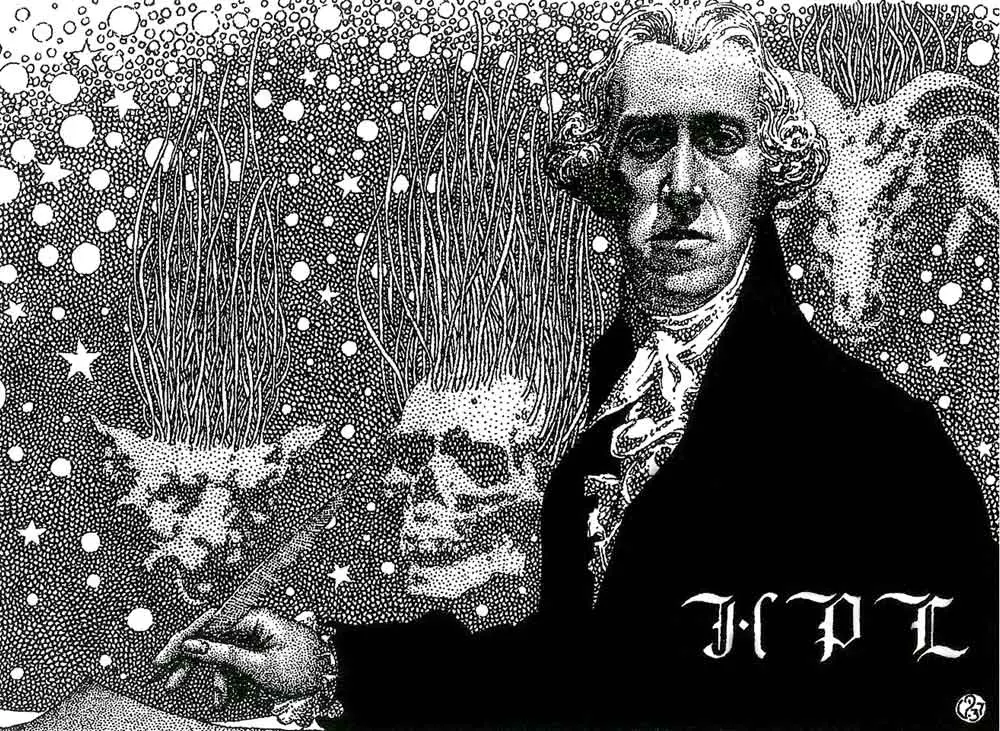
⁂ ⁂ ⁂
Another interesting element that creeps into the folds of Lovecraftian pages is the undoing of the romantic ideal of the Sublime. Edmund Burke (1729 - 1797), in his classic A Philosophical Inquiry into the Origin of Our Ideas of the Sublime and Beautiful, defines the Sublime as "anything suitable to provoke the ideas of pain and danger, or anything that is terrible, linked to terrible objects or that operates in a manner similar to terror ", continuing then saying that the Sublime"it produces the most intense emotion that the mind is capable of feeling"[Cfr. M. Maculotti, He who looked into the abyss: HP Lovecraft and "The ocean at night"].
Ne The statement, if the terror acts initially, both on the reader and on the protagonists, as agent provocateur of the Sublime, the latter is then tragically broken by Lovecraft himself: terror captures just for a moment, then restless, repulsive, becomes repellent. The protagonists of his works die so unnecessarily, as he writes Michel Houellebecq in HP Lovecraft. Against the world, against life, that pain and danger become distant, distant, but at the same time almost perceptible and comprehensible to readers, who, after reading, still have only a cold sense of dirt.
So, just like life, death has no meaning, and the contrast between the rejection of reality and extreme materialism creates irreparable distortions, cracks in the tangible world that surrounds everyone, which allow us to see into a further Elsewhere populated by unmentionable beings, populated by the most atavistic Evil that can be conceived [cf. A. Scarabelli, Beasts, men or gods: HP Lovecraft's alien cults].
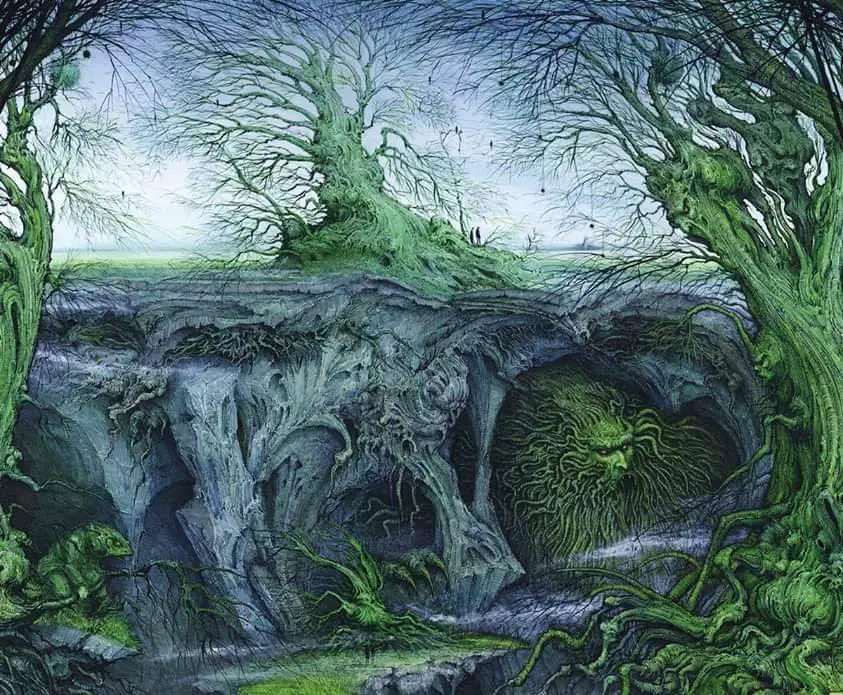
⁂ ⁂ ⁂
The distortion and deterioration of the Sublime is also reflected in the creation, description and contemplation of the architectural structures that Lovecraft has included in his stories. It is well known how the loner from Providence loved antiquity and especially the Greek and Roman golden period, the myths of which he had read and reread, providing him with considerable conceptual insights [cf. Poetry and the gods].
While loving classical architectural beauty, he spilled page upon page about in his writings deformed buildings, twisted labyrinths, rooms from an incomprehensible and alienating perspective and other design atrocities. This is because he saw in the historical period in which he lived an unstoppable decay and an irrepressible decay, thus projecting them first in his unconscious and then, through ink, on paper. HPL thought he was facing the end of Western society, his last step before capitulation.
The author has shown his love for meticulous and entrancing descriptions and for culture andRoman and Greek architecture in many writings, and the correspondences are a direct testimony, not filtered by fiction. In a letter to Maurice A. Moe, contained in the volume The horror of reality. The vision of the renewing world of fantastic fiction, Our writes:
“[…] The more I read the Scriptures, the more I realized how alien they were. I loved Greco-Roman mythology much more, and at the age of eight I amazed my family by declaring myself a pagan of Roman times. »

But on the other hand, as we have said, in the core of the most important and dense stories, he completely turned these assumptions upside down. You can thus connect to Edward gibbon (1737-1794), English historian and writer who, in his most famous work The History of the Decline and Fall of the Roman Empire, tells of the fall of the Roman Empire, covering the period from 98 to 1453. Among the theories of Gibbon on the causes of the end of the empire, the faults fall, without interruption, both on the shoulders of the barbarians (not the invaders , but those integrated into society and the mercenaries defenders of the borders, capable according to Gibbon of undermining the stability of the system from within), both on the entire population, which seems to have lost its reasoning and its intrinsic civilization.
For this reason it is not difficult to bring together the thoughts of Lovecraft and Gibbon, given some obvious points that they seem to share, especially in the light of the letters. Also to Moe he writes:
« In a sense, Rome has never died: the whole Western world is heir to its culture. We use his alphabet, much of the etymology of his words and schools of thought - and now in America its history and its problems are repeating itself! »
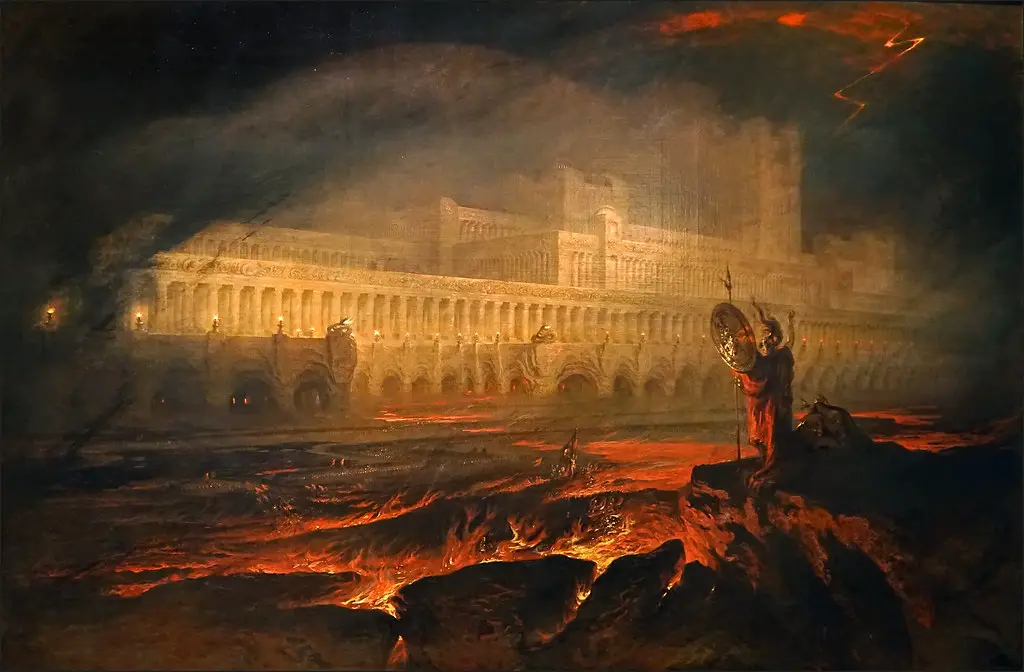
⁂ ⁂ ⁂
It is well known that Lovecraft drafted Randolph Carter's statement from a dream, as a letter to his friends Galpin and Moe from 1919 attests, as it is well known that dreams were a fundamental part of his life [cf. M. Maculotti, “Oniricon”: HP Lovecraft, the Dream and the Elsewhere]. It is therefore necessary to mention one of these dreams, which among other things also well expresses the previously mentioned love for architecture:
« One night some time ago I had a strange dream of a strange city - a city of many palaces and golden domes, which stood in a hollow set among a row of gray, hideous hills. There was not a soul in all the vast region of stone-paved streets, marble walls, and columns; the numerous statues in the public squares depicted strange bearded characters wrapped in tunics of a style that was unknown to me and which I have never seen since. I was visually well aware of that city. I was both within it and around it at the same time. But I certainly had no bodily existence. I saw, it seemed to me, everything together, without limitation related to the direction. I didn't move, but I freely transferred my perceptions from one point to another, at will. I did not occupy a defined space, I had no shape. I was just an awareness, a perceptive presence. I remember having felt a strong curiosity in front of that scenario and having tried hard to remember its origin: since I felt I had known it well, once, and that if I could remember, I would have been transported back in the eras up to that period. so remote - dating back many thousands of years, when a vague but terrible event had occurred. After a while I almost managed to clear up my memory, and went mad with terror, although I didn't know what I was about to remember ... And in that moment I woke up, curled up on myself and wrapped in too many blankets in relation to the temperature, which was rapidly climbing. "
Lovecraft then adds a philosophical consideration:
“At this point you will wonder where these visions come from! And I answer you: if I have to be pragmatic, that dream was as real as my sitting at this desk, pen in hand! If the truth or falsity of our impressions is something immaterial, then I really and unquestionably am, or have been, a disembodied spirit hovering over a very strange, silent and ancient city, which stood in an unknown place among gloomy, death. hills. At the moment of the dream, I really thought I was there: and what else does it matter? Do you believe that I am actually HP Lovecraft right now than I was then a spirit? Not me. "
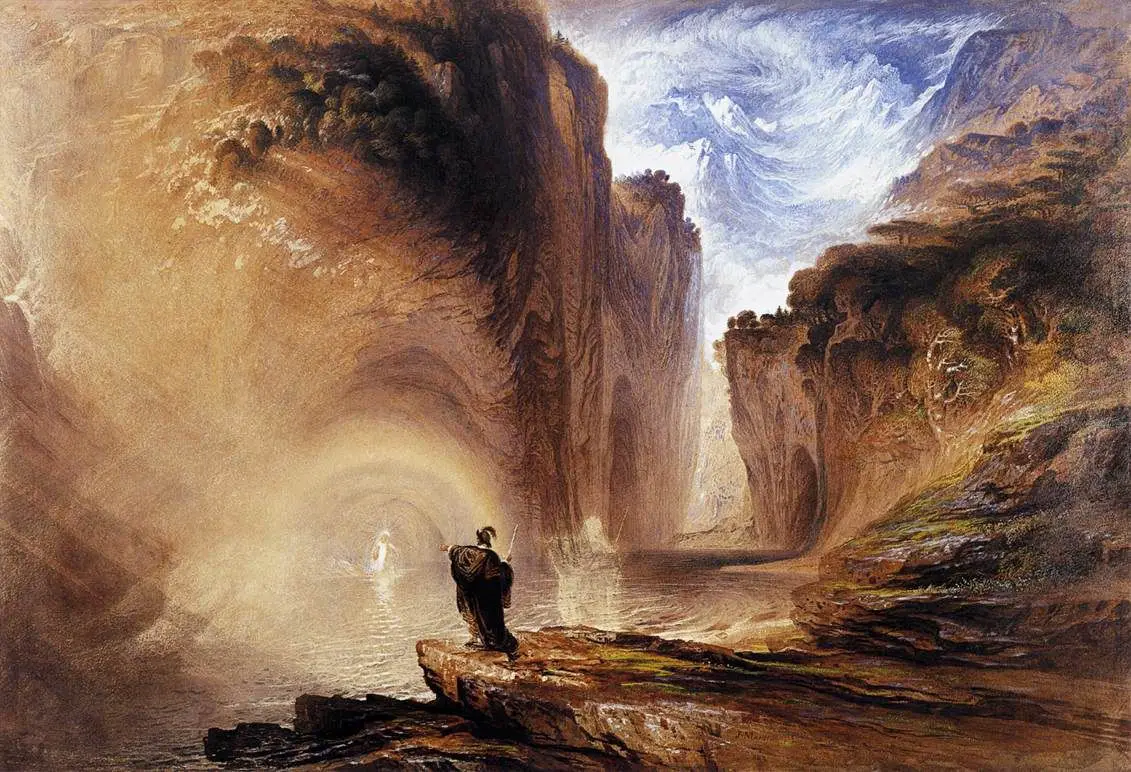
If all this is not surprising, it certainly can offer an intriguing question: and yes The statement in question was some sort of meta-dream, or a dream that explains its functioning in writing? Some elements can help to continue in this direction. For example, Carter justifying himself at first with the police might be the same author who seeks rational grounds for what he just saw in his sleep.
And again, the path inside the cemetery represents the transition from semi-sleep to deep sleep (the vision of dark and fleeting shadows at the edge of the visual field would not be a coincidence, therefore), and the tomb thus becomes significant again: its uncovering indicates the transition into the REM phase and its unknown dimension synthesizes the dream in itself, incorporating all its contents, two among all the atavistic fear of death and the inextinguishable curiosity for it.
⁂ ⁂ ⁂
One last note. Norman Gayford, in his article Randolph Carter: An anti-hero's quest, contained in issues # 16 and # 17 of Lovecraft Studies, explains how Carter's journey, which after The statement will be the protagonist of other stories with a greater mystical-oneiric component, can be considered in a mythical key, bringing up works and important names such as theIliad by Homer e The myth of the eternal return by Mircea Eliade. Quoting the author directly, referring to the overall series of short stories featuring Carter:
"[…] These tales and the novel reveal a Carter whose life involves many characteristics of the Campbellian Hero: quests, supranormal aids, periods of penance; yet his life of him also exemplifies the path of the modern anti-hero in that he faints, seems unable to use a traditional weapon such as a sword, and loses touch with dreams and self […] "
He also adds:
"The hero is the unusual being in society, the one who strays into, pursues, or is thrust into unknown realms. This is the “call to adventure”. Sometimes the hero refuses the call, or muffs it, and transforms his world di lui into a wasteland. [...] Carter is very much the hero outside of his society, the self-exiled writer-artist »
Gayford then identifies Carter as a antihero, placing a series of precise and accurate observations, and this demonstrates the fruitfulness of ideas and ideas that Lovecraft's writings still show today.
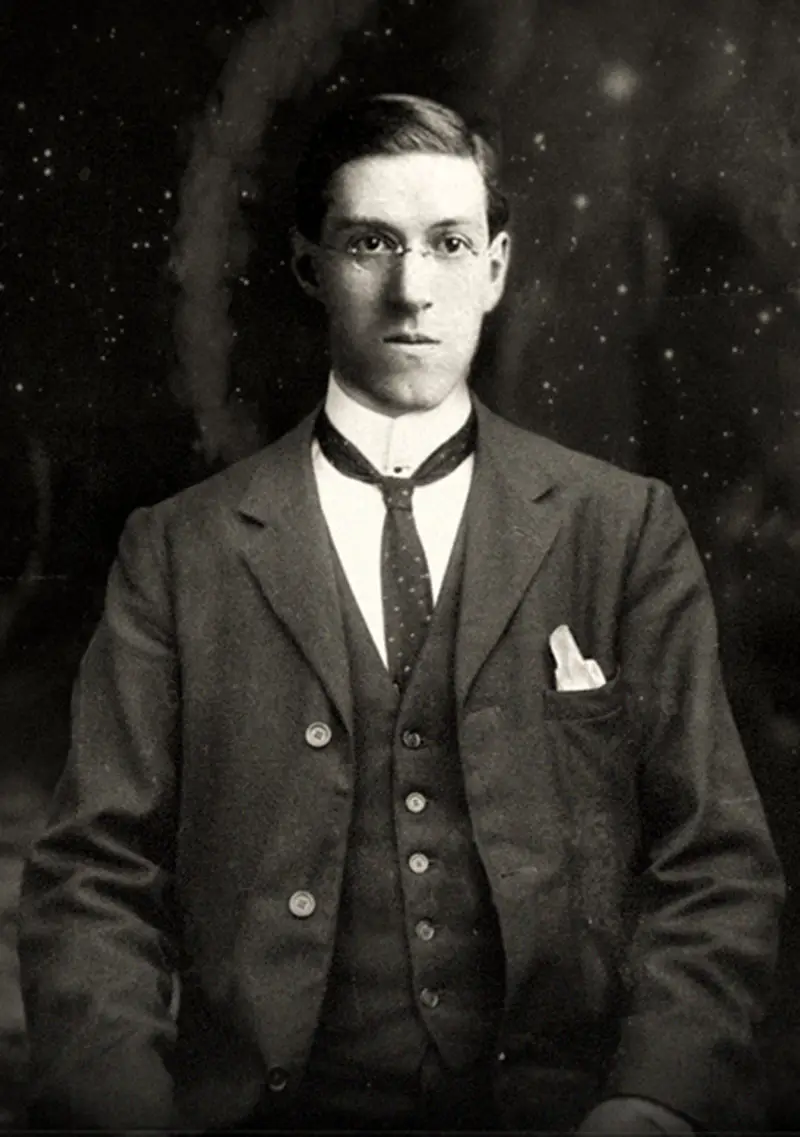
Bibliography:
- E. Burke, A Philosophical Inquiry into the Origin of Our Ideas of the Sublime and Beautiful, 1757
- M. Houellebecq, HP Lovecraft. Against the world, against life, Bompiani, Milan
- N. Gayford, Randolph Carter: An anti-hero's questin Lovecraftian Studies No. 16-17
- E. Gibbon, The History of the Decline and Fall of the Roman Empire, 1776
- HP Lovecraft, Randolph Carter's statementin All the tales 1897-1922
- HP Lovecraft, Dreamicon, Bietti, Milan
- HP Lovecraft, The horror of reality, Mediterranee, Rome

3 comments on “On HP Lovecraft's “Randolph Carter”: the Dream, Death and the Sublime"